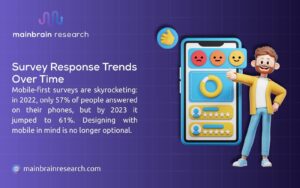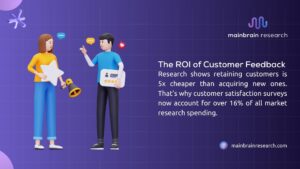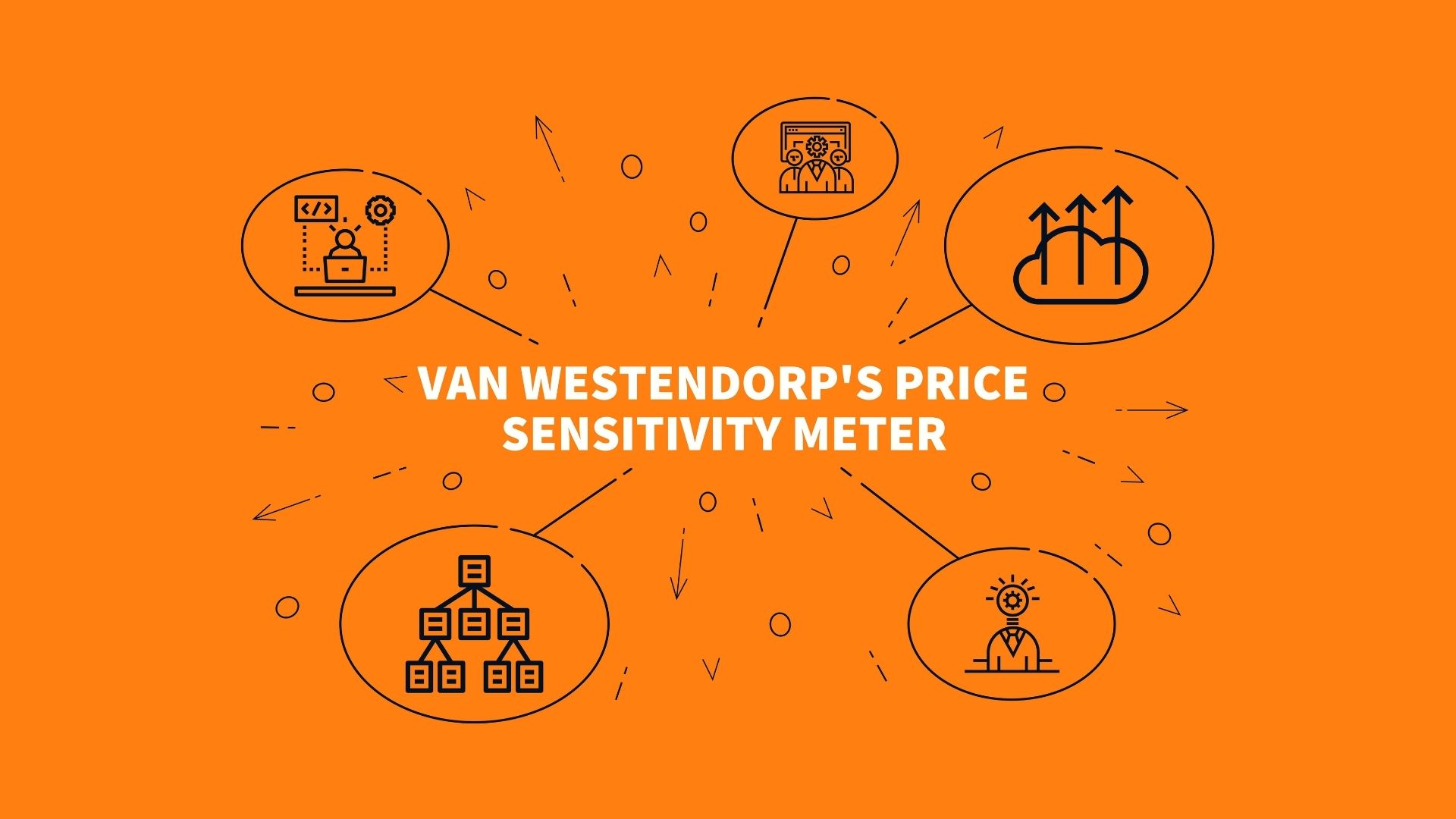Most researchers now swear by online surveys, with 85% using them as their main tool. Makes sense when over 61% of people answer surveys on their phones these days. That number was only 57% last year, showing how fast things change in this space.
The variety of types of market research surveys available today is honestly overwhelming. Some take two minutes, others stretch for hours. Some cost next to nothing, others require serious budget commitments. The trick is matching the right method to the specific problem at hand.
Smart companies turn it into a competitive advantage. Knowing the importance of market research goes way beyond filling spreadsheets with numbers. It’s about reducing risk, spotting opportunities before competitors do, and building stuff people actually want to buy.
Knowing the Basics
Market research surveys work like bridges between companies and their customers. Instead of guessing what people think, businesses can ask directly and get real answers. Sounds simple, but there’s definitely skill involved in doing it right.
Primary research means going straight to the source – asking customers, prospects, or users directly through surveys, interviews, or watching what they do. This gives companies fresh insights tailored exactly to their questions. Secondary research involves digging through existing studies, reports, and industry data to fill in gaps.
Survey length has gotten much shorter lately. The average online survey now has 11 questions, down from nearly 12 questions just five years ago. People have less patience for long surveys, especially on mobile devices where typing takes more effort.
Getting good response rates requires understanding how people actually use their devices. Most folks check their phones constantly throughout the day, but they won’t spend 20 minutes answering detailed questions unless there’s a compelling reason to do so.
Online Surveys Dominate the Space
Online surveys became the default choice for obvious reasons – they’re cheap, fast, and can reach anyone with internet access. Email distribution, website embedding, social media sharing all work seamlessly with most modern survey platforms.
The technology has gotten pretty sophisticated. Skip logic shows relevant questions based on previous answers. Randomization prevents order bias. Mobile optimization ensures everything works smoothly on small screens. Real-time analytics provide immediate insights as responses pour in.
However, survey fraud is becoming a real problem. Some people rush through surveys just to collect incentives without providing thoughtful answers. Others give completely fake responses. Modern platforms fight back with attention checks, minimum time limits, and algorithms that spot suspicious patterns.
Mixing different question types keeps surveys interesting and generates better data. Multiple choice questions work great for quantifiable stuff. Rating scales capture satisfaction levels nicely. Open-ended questions often reveal surprising insights that structured questions miss completely.
Response rates vary wildly depending on survey length, topic relevance, and who’s being asked. Business surveys typically get lower response rates than consumer surveys, but the answers tend to be more detailed and useful.
Customer Satisfaction Never Goes Out of Style
Customer satisfaction surveys eat up 16.4% of total market research spending, according to recent industry data. That’s a huge chunk, but it makes sense given how much acquiring new customers costs compared to keeping existing ones happy.
Net Promoter Score (NPS) surveys have taken over partly because they’re so simple. Ask one question: “How likely are you to recommend us to others?” Rate it 0-10. Done. The math behind categorizing promoters, passives, and detractors provides surprisingly useful insights about loyalty and growth potential.
Customer Effort Score (CES) surveys measure how hard customers had to work to get things done. Whether buying something, getting help, or using a product, effort levels predict future behavior better than satisfaction scores sometimes.
Post-purchase surveys catch people while memories are still fresh. Wait too long, and other experiences muddy the waters. Send them too early, and customers haven’t had time to form real opinions about what they bought.
Exit surveys target people who are canceling or leaving. These often reveal systemic problems that, once fixed, prevent other customers from departing. The insights can be uncomfortable but incredibly valuable for improving retention rates.
Brand Awareness Research Reveals Market Position
Brand awareness surveys show how companies stack up against competitors in customers’ minds. This research measures recognition levels, what people associate with different brands, and overall market positioning.
Unaided recall asks people to name brands in a category without any hints. This reveals which companies truly own mindshare in their markets. Aided recall provides brand names and measures familiarity levels, showing broader recognition patterns.
Brand perception studies dig deeper into emotions and associations.
- What personality traits do people connect with specific brands?
- How do they rate quality?
- What values do they think brands represent?
These insights guide marketing messages and positioning decisions.
Competitive brand analysis through surveys provides intelligence about market position relative to rivals.
- Why do customers choose competitors?
- What drives brand switching?
- Where are the gaps in current offerings?
This information proves invaluable when planning new products or major marketing pushes.
Brand tracking studies monitor how perceptions change over time. Many companies run these quarterly or twice yearly to see how marketing campaigns, product updates, or competitor actions affect their brand health metrics.
Market Segmentation Uncovers Hidden Opportunities
Not all customers are the same, obviously. Market segmentation surveys identify distinct groups within audiences based on demographics, behaviors, needs, and preferences. Good segmentation enables targeted marketing that resonates much better than generic messages.
Demographic segmentation sorts people by age, income, gender, education, location – the basic stuff. While useful, modern segmentation goes much deeper into psychological and behavioral factors that better predict what people will actually do.
Psychographic segmentation explores values, interests, lifestyles, personality traits. This provides a richer understanding of what motivates different groups and how they make decisions. Companies can craft messages that connect emotionally with specific segments.
Behavioral segmentation focuses on how people interact with products or services. Usage patterns, loyalty levels, purchase frequency, response to promotions. These behavioral insights help tailor offers and communications for maximum impact.
The challenge with segmentation research lies in finding the sweet spot between useful detail and practical application. Creating dozens of micro-segments might be statistically interesting but operationally useless. Successful segmentation identifies groups large enough to target profitably while remaining different enough to warrant distinct approaches.
Competitive Intelligence Through Smart Questioning
Knowing the competition requires more than just studying competitors’ websites and marketing materials. Competitor research surveys provide insights into how customers actually perceive rivals, what they offer that’s compelling, and why people choose them over alternatives.
Competitive benchmarking surveys compare performance against industry leaders across key metrics. Customer satisfaction scores, brand perception ratings, and service quality measures. Knowing where a company stands relative to competitors helps prioritize improvement areas and identify unique selling propositions.
Win/loss analysis surveys are gold mines for B2B companies. Asking prospects who didn’t buy why they chose competitors reveals crucial insights for sales training, product development, and positioning adjustments. Similarly, understanding why customers chose the company highlights competitive strengths worth emphasizing.
Feature comparison studies help companies understand which product or service attributes matter most when customers choose between options. These insights guide product development priorities and help communicate value propositions more effectively.
Competitive pricing research reveals how customers perceive value relative to alternatives. Price sensitivity, willingness to pay premiums for specific features, and how pricing factors into purchase decisions, alongside other considerations.
Product Development Gets Customer Input
Successful product development depends heavily on customer input throughout the innovation process. Concept testing surveys validate ideas before investing serious money in development. Present product concepts to target audiences and gather feedback on appeal, purchase intent, and potential improvements.
Prototype testing lets customers interact with early product versions. These surveys capture usability feedback, identify problems, and reveal refinement opportunities. The iterative nature of prototype testing helps ensure final products meet customer needs and expectations.
Price sensitivity research helps companies understand customer reactions to different pricing levels. Techniques like the Van Westendorp Price Sensitivity Meter or Gabor-Granger analysis identify optimal pricing ranges.
Feature prioritization surveys help companies understand which product capabilities matter most to customers. When development resources are limited, these insights guide decision-making and ensure teams build features that provide genuine value.
The benefits of market research become obvious in product development, where customer insights prevent expensive mistakes and guide innovation efforts effectively.
Beta testing surveys collect feedback from customers using pre-release products. These studies identify bugs, usability issues, and feature gaps while products can still be improved before public launch. Beta feedback often reveals use cases developers hadn’t considered.
Specialized Methods for Specific Needs
Longitudinal studies track the same people over extended periods, showing how attitudes, behaviors, and preferences evolve. These prove valuable for understanding customer lifecycle patterns and long-term trend analysis.
Panel surveys use pre-recruited groups who participate in multiple studies over time. This approach ensures consistency and enables deeper relationships with research participants. Panel members often provide more thoughtful responses because they understand the research value.
Pop-up and intercept surveys collect feedback at specific moments during customer journeys. After completing purchases, visiting particular webpages, and spending a certain time on sites. The immediate nature captures fresh impressions and contextual feedback that delayed research might miss.
Diary studies ask participants to record experiences, behaviors, and thoughts over extended periods. These provide insights into daily routines, usage patterns, and evolving attitudes that single-point surveys might miss entirely.
Mobile ethnography combines survey questions with photo uploads, location data, and real-time feedback from participants in natural environments. This methodology provides rich context about how customers actually use products or services in real-world situations.
| Survey Type | Best For | Main Benefits | Time Needed |
| Online Surveys | Broad insights | Cheap, scalable | 5-10 minutes |
| Phone Interviews | Personal connection | High-quality responses | 15-30 minutes |
| Focus Groups | Group dynamics | Interactive discussions | 90-120 minutes |
| Mobile Pop-ups | Immediate feedback | Real-time, contextual | 1-3 minutes |
| Panel Studies | Tracking changes | Consistent participants | Varies |
How Do Surveys Work in Practice?
Survey length really matters now more than ever. Research shows surveys with five or fewer questions per page keep people engaged better. Total time under 10 minutes seems to be the sweet spot for maintaining response quality.
Question design makes or breaks data quality. Leading questions that push people toward specific answers should be avoided completely. Clear, simple language beats technical jargon every time. All necessary response options must be included or people get frustrated.
Sampling strategy determines whether results actually represent target populations. Random sampling provides best statistical validity, but practical constraints often require alternatives. Quota sampling ensures representation across key demographic groups. Convenience sampling offers speed and cost advantages for exploratory research.
Response rate optimization involves several tactics: compelling subject lines for email invitations, mobile-friendly design, appropriate incentives, and strategic follow-up timing. Balance between response quantity and quality matters – too many reminders annoy people, too few result in insufficient responses.
Survey timing affects both response rates and data quality significantly. Business surveys often work better midweek, consumer surveys might perform better evenings and weekends. Cultural considerations become important for global surveys since response patterns vary dramatically across countries.
Technology Changes Everything
Artificial intelligence integration is transforming how businesses collect and analyze customer insights. AI-powered tools can automatically generate survey questions, detect fraud or poor quality responses, and provide real-time analysis of open-ended responses. These capabilities enable faster, more accurate research with less manual work.
Conversational surveys use AI chatbots to conduct interviews using natural language. This feels more engaging for respondents while allowing dynamic follow-up questions based on previous answers. The conversational format often increases completion rates and provides richer qualitative insights.
Real-time analytics let businesses monitor survey results as responses arrive, enabling quick adjustments to marketing campaigns or product strategies based on emerging insights. This immediacy proves valuable in fast-moving markets where delayed insights become irrelevant.
Synthetic data is becoming important as privacy regulations tighten and survey fatigue grows. This technology generates artificial responses that mimic real customer behavior patterns, allowing scenario exploration without collecting personal information.
Voice surveys through smart speakers and mobile devices offer new possibilities for convenient response collection, particularly for short, frequent feedback during natural interaction moments.
Connecting Research to Business Results
Market research only matters if it actually influences business decisions. Knowing how to do market research for a startup involves aligning research objectives with business goals – validating product-market fit, understanding competitive positioning, and identifying growth opportunities.
Research timing has a big role in maximizing impact. Customer satisfaction surveys right after major product updates capture fresh impressions. Brand awareness studies before and after marketing campaigns measure effectiveness accurately. Regular research schedules help track trends and identify changes over time.
Cross-functional collaboration makes sure that research insights reach teams who can act on them. Marketing needs customer preference data for campaigns. Product teams require feature feedback for development priorities. Customer service benefits from satisfaction insights to improve support processes.
For smaller companies, market research for a small business often means balancing comprehensive insights with limited budgets. Focus on specific customer segments, use shorter surveys more frequently, combine different methods to maximize insights while controlling costs.
Budget allocation should align with business priorities and expected returns. High-stakes decisions warrant comprehensive research investments. Routine monitoring can use cost-effective approaches. Match research intensity to decision importance and potential impact.
Advanced Techniques for Complex Questions
Conjoint analysis ranks among the most sophisticated survey techniques for understanding customer preferences and trade-offs. Present different product configurations and ask people to choose their preferences. The analysis reveals how customers value different features and make decisions between price, quality, and functionality.
MaxDiff scaling helps prioritize features, benefits, and brand attributes by forcing respondents to identify the most and least important items from option sets. This provides more discriminating results than traditional rating scales and identifies clear priorities for business decision-making.
Discrete choice modeling simulates real-world purchase decisions by presenting realistic choice scenarios. These studies reveal how customers make actual decisions when faced with competing alternatives, providing insights that better predict market behavior.
Implicit association testing measures unconscious attitudes and perceptions people might not express directly. This reveals automatic associations between brands and attributes, providing insights into subconscious brand perceptions that influence purchase decisions.
Behavioral experiment surveys combine traditional questioning with behavioral tasks or scenarios. Show different website designs and measure interaction patterns while collecting conscious preferences. This dual approach provides both stated and revealed preferences.
Keeping Data Quality High
Data quality has become challenging as online surveys proliferate and fraud becomes more sophisticated. Modern platforms employ multiple techniques: attention checks throughout surveys, minimum time requirements to prevent rushing, and algorithms detecting suspicious response patterns.
Response validation involves checking logical consistency across related questions, identifying straight-lining (same response for all questions), and flagging responses that seem too perfect or follow suspicious patterns. Some quality control measures may exclude legitimate responses, but the trade-off usually favors accuracy over quantity.
Sample representativeness requires ongoing monitoring to ensure survey respondents actually reflect target populations. Track response rates across demographic groups, adjust for non-response bias, weight results when certain segments are under- or over-represented.
Ethical considerations include informed consent, data privacy protection, and transparent communication about response usage. Privacy regulations like GDPR and CCPA require balancing insight collection with respondent rights and preferences.
Response bias mitigation involves multiple strategies: randomizing question order, using neutral language, providing balanced response scales, and avoiding leading questions.
Measuring Research Impact
Demonstrating return on investment from market research requires connecting survey insights to measurable business outcomes. Track how customer satisfaction improvements correlate with retention rates, measure how product feedback influences development costs, and analyze how competitive intelligence affects market share.
Key performance indicators for research programs include response rates, data quality scores, insight utilization rates, business impact metrics. Successful programs track not just data collection, but whether that data drives decision-making and produces measurable results.
Research efficiency becomes crucial as survey volumes increase. Optimize survey length without sacrificing insight quality, automate routine analysis tasks, and develop templates and processes enabling faster study deployment. Maximize insights per research dollar invested.
Long-term value creation extends beyond immediate decision support. Build comprehensive customer knowledge bases, track competitive intelligence over time, and develop deep market understanding that creates strategic advantages compounding over years of consistent research investment.
Cost-benefit analysis helps organizations allocate research budgets effectively across different survey types and methodologies. High-cost methods like in-person interviews may be justified for critical decisions, while routine monitoring can use cost-effective online approaches.
Get Professional Market Research
Taking a look at different types of market research surveys is just the starting point. The real challenge lies in picking the right approach for specific business situations, analyzing results properly, and turning those insights into actions that actually move the needle.
MainBrain Research has spent years helping companies with market research surveys. Our team knows which methods work best for different situations, how to design surveys that people actually complete, and most importantly, how to turn raw data into strategic insights.
Get in touch with MainBrain Research to see how professional market research services can help make better business decisions based on solid data.


















